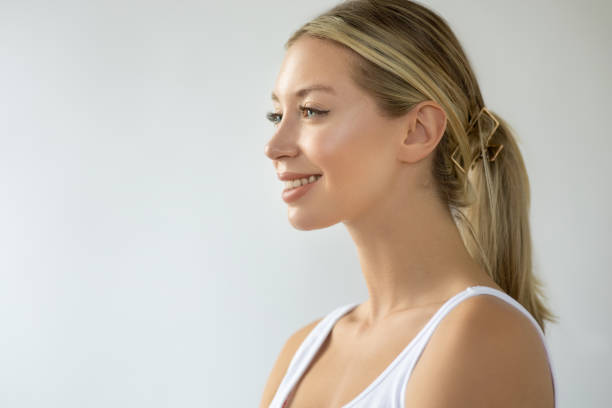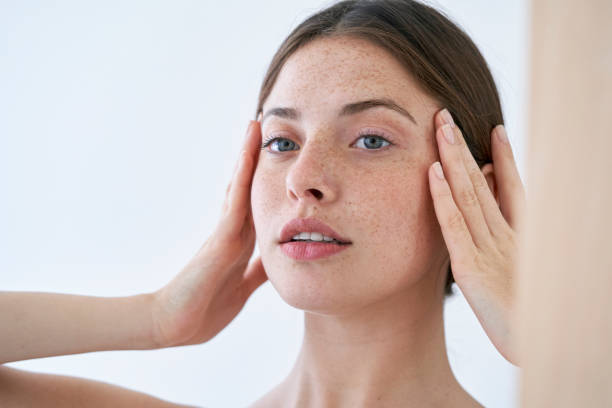Rhinoplasty, commonly known as a nose job, is a popular cosmetic procedure aimed at enhancing the appearance and sometimes the functionality of the nose. It is a transformative surgery that can boost confidence and improve facial harmony. When considering Rhinoplasty in Abu Dhabi, many individuals wonder about the appropriate age to undergo this procedure. Understanding the ideal age for rhinoplasty is essential to ensure optimal results and a safe recovery process.
In this comprehensive guide, we will explore the factors that determine the best age for rhinoplasty, the physical and psychological considerations, and how age influences the outcome of the procedure. Whether you’re contemplating rhinoplasty for aesthetic reasons or functional improvement, knowing the right timing is crucial for achieving satisfying and long-lasting results.
Understanding the Development of the Nose
The Growth and Maturation of Facial Features
The nose is a prominent feature that undergoes significant growth and development during adolescence. The facial bones and cartilage continue maturing well into the late teens and early twenties. The nose’s shape and size are influenced by genetic and environmental factors, with adolescence being a critical period for facial growth.
When Does the Nose Finish Growing?
Typically, the nose reaches its full size and shape by the age of 16 to 18 in females and slightly later in males. This period marks the completion of skeletal and cartilaginous growth, making it the most suitable time for rhinoplasty from a developmental standpoint. Performing rhinoplasty before the nose has fully matured can result in unpredictable outcomes and potential need for revision surgeries.
Physical Considerations for the Ideal Age
Maturity of Facial Structures
A key factor in determining the ideal age for rhinoplasty is the maturity of facial bones and cartilage. An ideal candidate should have fully developed facial features to ensure that the surgical modifications remain stable over time.
Skin Elasticity and Healing
Younger individuals tend to have more elastic skin, which can adapt better to surgical changes. However, overly youthful skin may also lead to certain aesthetic challenges, such as swelling or uneven healing. Conversely, older skin may be less elastic, affecting the final appearance but still capable of achieving good results.
Overall Health and Healing Capacity
The ability to heal efficiently after surgery is important. Generally, healthier individuals with no underlying medical conditions are better candidates for rhinoplasty regardless of age. Proper healing contributes significantly to achieving desired results and minimizing complications.
Psychological and Emotional Readiness
Self-Perception and Expectations
A crucial aspect of determining the right age for rhinoplasty involves psychological maturity. Patients should have realistic expectations and a clear understanding of the procedure’s outcomes. Adolescents and young adults must be emotionally prepared for the changes and the recovery process.
Motivation and Decision-Making
The motivation behind seeking rhinoplasty should be personal and well-considered. Peer pressure or societal influences should not be the sole reasons for undergoing surgery. Ensuring genuine desire and readiness helps improve satisfaction with the results.
Factors Influencing the Timing of Rhinoplasty
Congenital or Traumatic Changes
Individuals with congenital deformities or those who have experienced nasal trauma often opt for rhinoplasty at a younger age. Early intervention can correct structural issues and improve breathing and appearance.
Functional versus Cosmetic Goals
While some seek rhinoplasty primarily for aesthetic reasons, others may require it to address functional issues like breathing difficulties. The urgency and timing may vary depending on the severity of the problem and the individual’s age.
Personal and Cultural Considerations
Cultural norms and personal preferences can influence the decision on when to undergo rhinoplasty. Some cultures may have specific aesthetic ideals, and personal circumstances such as career or social factors may also play a role.
When Is the Best Time for Rhinoplasty?
Ideal Age Range
The most suitable age for rhinoplasty generally falls between 16 and 25 years old. At this stage, facial growth is mostly complete, and individuals are mature enough to understand and handle the surgical process.
Special Cases and Considerations
In certain cases, rhinoplasty may be performed earlier if there are functional issues or congenital deformities. Conversely, older adults can also be good candidates if they are in good health and have realistic expectations.
Preparing for Rhinoplasty at the Right Age
Pre-Surgical Evaluation
A thorough assessment by a qualified surgeon helps determine whether a patient is ready physically and emotionally. This includes evaluating nasal structure, skin condition, and overall health status.
Setting Realistic Goals
Understanding what can be achieved through rhinoplasty helps set appropriate expectations. Whether aiming for subtle refinements or significant changes, clear goals contribute to satisfaction with the outcome.
Post-Surgery Care and Follow-Up
Adherence to post-operative instructions is crucial, regardless of age. Proper care ensures optimal healing, minimizes complications, and enhances the longevity of the results.
Final Thoughts on the Ideal Age for Rhinoplasty
Choosing the right age for rhinoplasty involves considering physical maturity, emotional readiness, and individual circumstances. For most individuals, waiting until facial growth is complete—typically in the late teens or early twenties—is advisable to ensure stable and natural results.
If you are contemplating Rhinoplasty Abu Dhabi, consulting with an experienced specialist can help determine the best timing based on your unique facial features and personal goals. Remember, age is just one aspect; your overall health, expectations, and emotional preparedness are equally important in achieving a successful outcome.







0 Comments